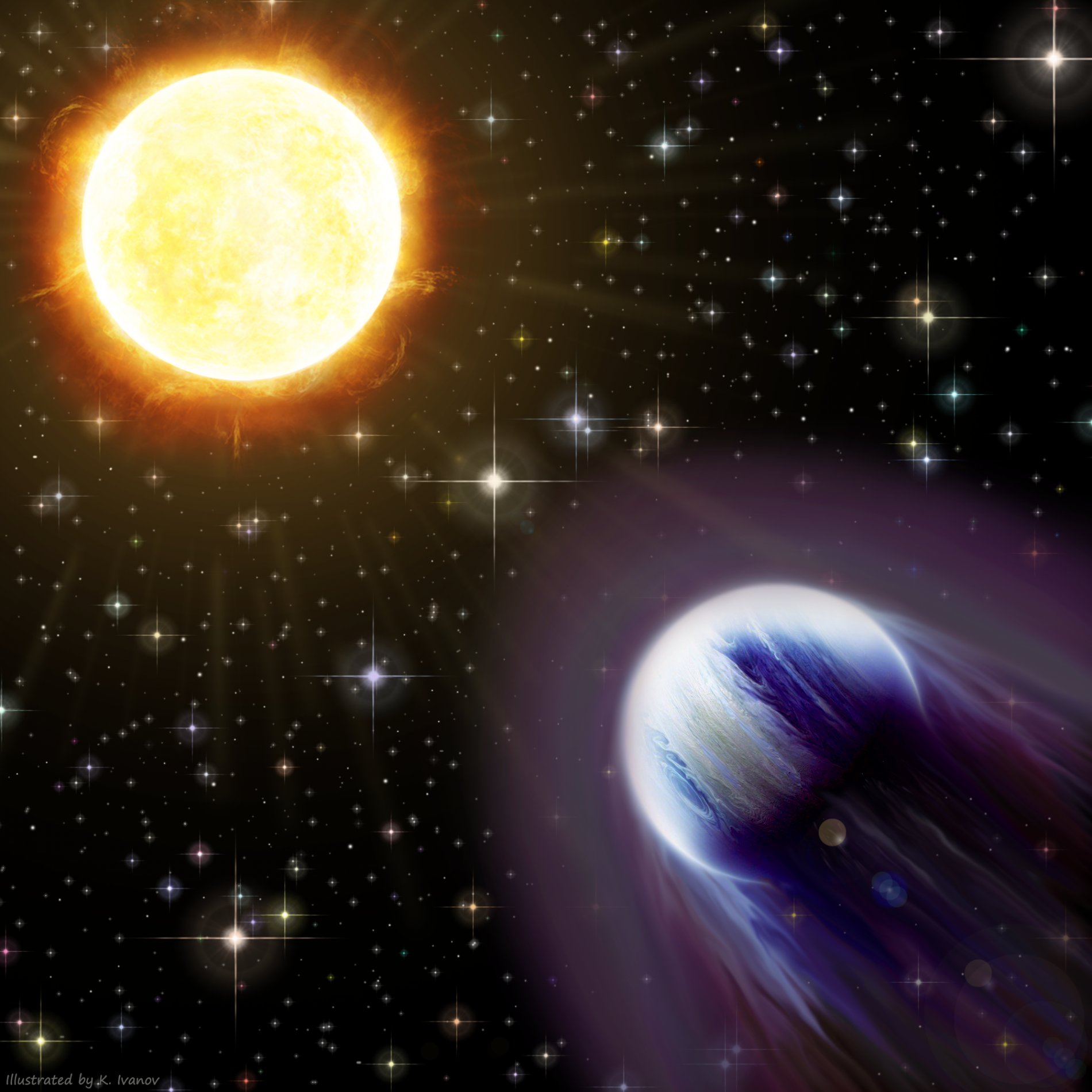Giant planet as light as cotton candy discovered
The Instituto de Astrofísica de Andalucía (IAA-CSIC) is co-leading the study of the second lightest planet discovered to date.
An international team, co-led by IAA-CSIC researcher Francisco J. Pozuelos, has discovered an extraordinarily light planet orbiting a distant star in our galaxy. This discovery, published today in the journal Nature Astronomy, challenges our understanding of the formation of giant and ultralight planets.
The new planet, dubbed WASP-193b, is about 50% larger than Jupiter, but its density is about 25 times lower, an extremely low value that suggests the planet is as ethereal as cotton candy.
WASP-193b is the second lightest planet discovered to date, surpassed only by Kepler 51d, a planet similar in size to Neptune. The dimensions of the newly discovered planet, combined with its extremely low density, make WASP-193b a true rarity among the more than five thousand exoplanets discovered to date.
"These kinds of extremely light giant planets are very rare to find," says Julien de Wit, co-author of the study and associate professor in MIT's Department of Earth, Atmospheric and Planetary Sciences. "This is an extreme case of a class of planets that are called 'puffy' or 'spongy' Jupiters. We've known about them for fifteen years, but they remain a real mystery."
"This planet challenges all our current theories of planet formation," adds study author Francisco J. Pozuelos, an astronomer at the Instituto de Astrofísica de Andalucía (IAA-CSIC). "We cannot explain how this planet formed. We need detailed observations of its atmosphere in order to understand its evolution."
TOO LIGHT
The new planet was discovered by WASP (Wide Angle Search for Planets), an international collaboration that jointly operates two robotic observatories in both hemispheres. Each observatory employs an array of wide-field cameras to measure the brightness of thousands of individual stars across the sky.
From observations obtained between 2006 and 2008, and subsequently between 2011 and 2012, the WAPS-South observatory detected periodic decreases in the brightness of WASP-193, a Sun-like star located about 1200 light-years from Earth. Analysis of these periodic transits was consistent with a giant "super-Jupiter" passing in front of the star every 6.25 days.

Artistic recreation of the WASP-193b system. Credit: University of Liege
To calculate the planet's mass, as well as its density and possible composition, the team used the radial velocities method. This technique analyzes the small oscillations in the motion of the star due to the attraction of a planet orbiting around it. These variations are reflected in shifts in the wavelength of the star's spectrum. The more massive the planet, the larger the observed shift in the star's spectrum.
In the case of WASP-193b, high-resolution spectra of the star obtained by the HARPS and CORALIE spectrographs, located at the La Silla observatory in Chile, were analyzed. The surprise was that hardly any significant changes in the star's radial velocity were detected. "The amazing thing is that, despite its enormous size, this planet is so light that it barely exerts a detectable attraction on its star," explains Pozuelos.
LIKE COTTON CANDY
Calculations confirm that WASP-193b has a mass of approximately 0.14 times that of Jupiter and a density of 0.059 grams per cubic centimeter, considerably lower than that of Jupiter and Earth, but similar to the 0.05 grams per cubic centimeter of cotton candy.
"The planet is so light that it is difficult to imagine an analogous material in a solid state," says Julien De Wit of the Massachusetts Institute of Technology. "The reason it resembles cotton candy is because both are practically air. The planet is basically super fluffy."
According to the authors, it is possible that WASP-193b has an atmosphere predominantly composed of hydrogen and helium, several tens of thousands of kilometers more extensive than the atmosphere of Jupiter. At present, no planetary formation model can explain a planet with an atmosphere of these proportions.
"WASP-193b is a great mystery," Pozuelos concludes. "Of the few known ultralight planets, it is the best candidate to be studied by the James Webb Space Telescope and finally understand how a planet as light as cotton candy can form."

Artistic recreation of the density of WASP-193b compared to cotton candy. Credit: University of Liege
- An extended low-density atmosphere around the Jupiter-sized planet WASP-193 b
- DOI: 10.1038/s41550-024-02259-y
- Francisco J. Pozuelos
- Instituto de Astrofísica de Andalucía (IAA-CSIC)
- Teléfono: 625264179
- pozuelos@iaa.es
- Instituto de Astrofísica de Andalucía (IAA-CSIC)
- Unidad de Divulgación y Comunicación
- Emilio J. García, garcia@iaa.es, 649 407 445
- Celia Navas, navas@iaa.es
- https://www.iaa.csic.es
- https://divulgacion.iaa.csic.es

